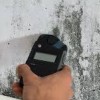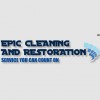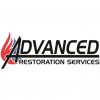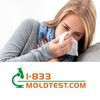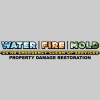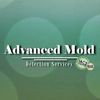
Note: We will be open for mold testing and mold inspections during normal daytime hours throughout this pandemic. Our inspectors & remediators will be wearing certified protective equipment while inspecting or performing mold remediation services inside your home. Exposure to mold can produce adverse health effects through inflammation, allergy, or infection.
Allergic reactions (often referred to as hay fever) are most common following mold exposure. Nose or throat irritation Skin rashes or irritation Headaches, memory problems, mood swings, nosebleeds, body aches and pains, and fevers are occasionally reported in mold cases. For some people, a relatively small number of mold spores can trigger an asthma attack or lead to other health problems.
For other persons, symptoms may occur only when exposure levels are much higher. Nonetheless, indoor mold growth is unsanitary and undesirable. Basically, if you can see or smell mold inside your home, take steps to identify and eliminate the excess moisture, cleanup and remove the mold immediately.
Allergic reactions (often referred to as hay fever) are most common following mold exposure. Nose or throat irritation Skin rashes or irritation Headaches, memory problems, mood swings, nosebleeds, body aches and pains, and fevers are occasionally reported in mold cases. For some people, a relatively small number of mold spores can trigger an asthma attack or lead to other health problems.
For other persons, symptoms may occur only when exposure levels are much higher. Nonetheless, indoor mold growth is unsanitary and undesirable. Basically, if you can see or smell mold inside your home, take steps to identify and eliminate the excess moisture, cleanup and remove the mold immediately.
Services
Inspection & Testing: The first step, as part of our specialized on-site service, includes a visual inspection for black mold or any other type of mold growing on interior surfaces of your home. If during our visual mold inspection, we detect mold growing in an area, we can take a direct sample from the area or object and have it tested for the presence of any toxic mold spores.
Note: We use a clear anti-microbial sealer 99% of the time. Before we can use a clear sealer, we need to get the cleaned and treated wood surfaces looking clean & mold free. Some companies routinely apply a low quality white sealer to cover up a poorly cleaned attic ceiling. When they do this the white sealer will start peeling within a few years where it was applied over the remaining moldy areas.
These attic mold inspection photos are from some recent mold remediation jobs we have performed. As you can see, the mold types and severity vary from one attic to another. We were able to restore all of these heavily mold contaminated attic ceilings to a mold-free condition with clean looking wood.
Dry ice blasting for mold remediation uses four physical properties of air-propelled dry ice pellets: velocity, abrasion, thermal shock, and evaporation. Dry ice is solid (frozen) carbon dioxide. For blasting uses, dry ice is manufactured in pellets of various sizes appropriate to the substrate to be cleaned.
What is mold and where is it found? Mold (fungi) is present everywhere - indoors and outdoors. There are more than 100,000 species of mold. At least 1,000 species of mold are common in the U.S. Some of the most commonly found are species of Cladosporium, Penicillium, and Aspergillus. Mold is most likely to grow where there is water or dampness - such as in bathrooms, attics and basements.
Reviews

Be the first to review Advanced Mold Detection & Remediation Services.
Write a Review